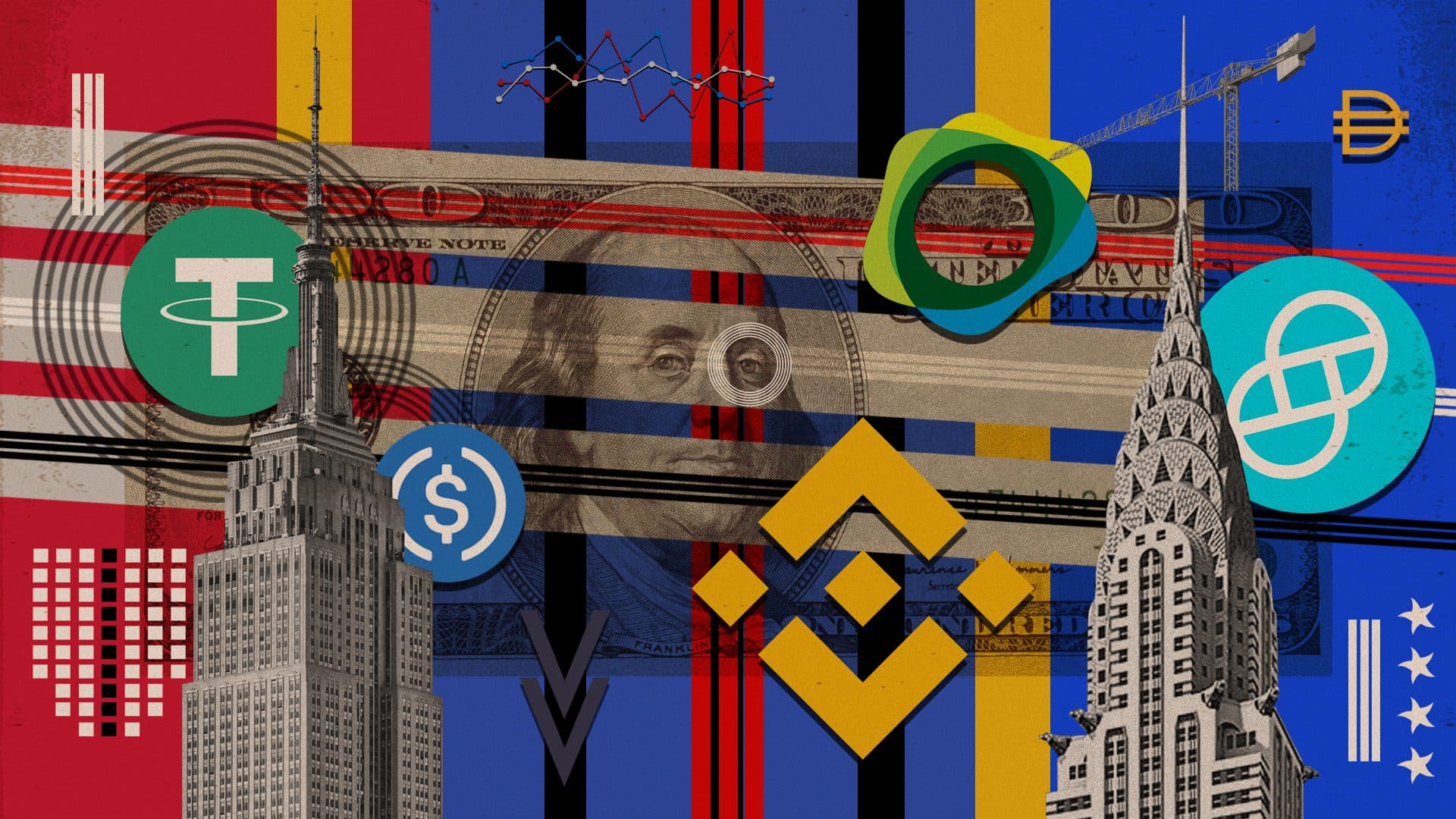Burgeoning Market Demand Driving Euro-stablecoin Expansion
The development of euro-based stablecoins has lagged that of USD stablecoins, yet demand for a euro-based product is building

Blockworks Exclusive Art by Axel Rangel
- The European private sector has trailed the US one in development of cryptocurrency and digital assets
- EURST has been engineered to provide stability, full transparency and reliable 100% fiat reserves, held in an FDIC-insured account
The development of euro-based stablecoins has lagged that of USD stablecoins, yet demand for a euro-based product is building. Further growth is both beneficial and inevitable.
Coin metrics data compiled by The Block identifies a total market capitalization of USD-denominated stablecoins at just over $180 billion. In contrast, euro-based stablecoins don’t achieve even 1% of this volume.
An irrational disparity
Last year Chainalysis identified Europe as having the largest cryptocurrency economy in the world. Along with the fact that the eurozone represents one of the world’s largest trading areas, this is further evidence of why the glaring gap between euro- and USD-denominated stablecoin products is so shocking.
Euro-stablecoin growth inevitable
It appears that many European participants in the digital assets sector are utilizing USD-based stablecoin products due to their comparative greater liquidity. Yet the liquidity issue is likely to be nothing more than a symptom of the early stage of development of euro-based stablecoins. As the sector continues to push past this limitation, there are several reasons that will necessitate European market participants to utilize euro-based stablecoins going forward.
The European private sector has trailed the US in crypto and digital assets development — which, when combined with strong remaining global dollarization, has resulted in USD-based stablecoins vastly outsizing equivalent euro-based stablecoin products. However, European financial institutions and institutional investors continue to enter the market, garnering increasing interest in euro-based stablecoins. As custody and trading services for a range of DeFi tokens are offered by European banks, this is likely to lead to greater demand for euro-based stablecoin products. This is particularly true regarding automated trading, with participants in the Forex market entering DeFi in earnest.
Forcing regulatory change
A key issue in favor of a euro stablecoin is the fact that DeFi users are subject to FX risk when they utilize a USD stablecoin. Furthermore, the stronger that USD stablecoins get, the more disadvantaged Europe becomes, as these products are largely under the supervision and influence of US regulators. This in turn would lead to more activity being USD-based within the EU — potentially resulting in undermining the effectiveness of European Central Bank (ECB) policy.
The stance taken by European regulators on stablecoins has not been particularly positive up until now. Despite this conservative regulatory approach, with popular support higher than its ever been for blockchain-based financial sectors, resistance to this inevitable development will dissipate.
The ECB has been looking for a veto on euro stablecoin projects. However, if the euro continues to be undermined through ever-greater USD-denominated projects, the market is going to force the ECB and European policymakers to soften their stance and facilitate euro-based stablecoin products to a greater extent.
US-based Wallex is offering a solution to market participants through EURST — its Euro-based stablecoin product. According to Simone Mazzuca, Wallex CEO and founder, on the road to regulation and large-scale institutional adoption, a euro stablecoin is necessary to bridge traditional finance and blockchain in a compliant way. Mazzuca also points to EURST as a reliable and decentralized method to hold fiat-based assets, whilst providing an alternative payment method to SWIFT and SEPA payment systems.
The US-based entity has taken a different approach than other euro stablecoin project. As Mazzuca points out:
“EURST has been engineered as a structure to provide stability, full transparency and reliable 100% fiat reserves, held in an FDIC insured account. Moreover, the fiat reserves are publicly accessible via our auditor’s live attestations. We are working for the 90% of the population who have not yet entered the crypto space, and will do it, by choosing their reliable EUR stable token.”
In a recent press conference, ECB President Christine Lagarde expressed a desire to expedite the roll-out of a euro-based central bank digital currency (CBDC). However, in reaching out to Mazzuca, he pointed to the likelihood of a euro CBDC taking quite some time, yet the market need is immediate:
“EURST was created in the right time and in the right way, to be the solution to bridge the European economy from the traditional assets space to digital assets, today.”
Europe lost out to the US during the previous internet-led innovative wave due to over-regulation. Market demand is likely to force change and with that, euro-based stablecoins are poised for further growth.
This content is sponsored by Wallex.
Get the news in your inbox. Explore Blockworks newsletters:
- The Breakdown: Decoding crypto and the markets. Daily.
- 0xResearch: Alpha in your inbox. Think like an analyst.






